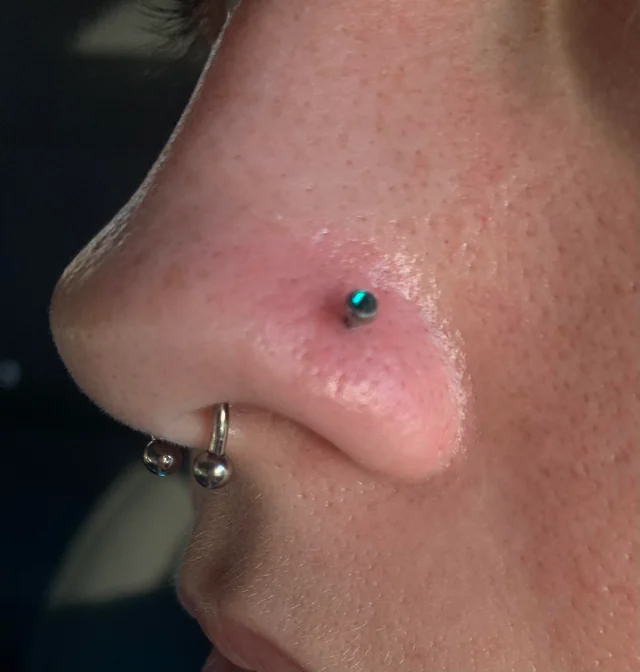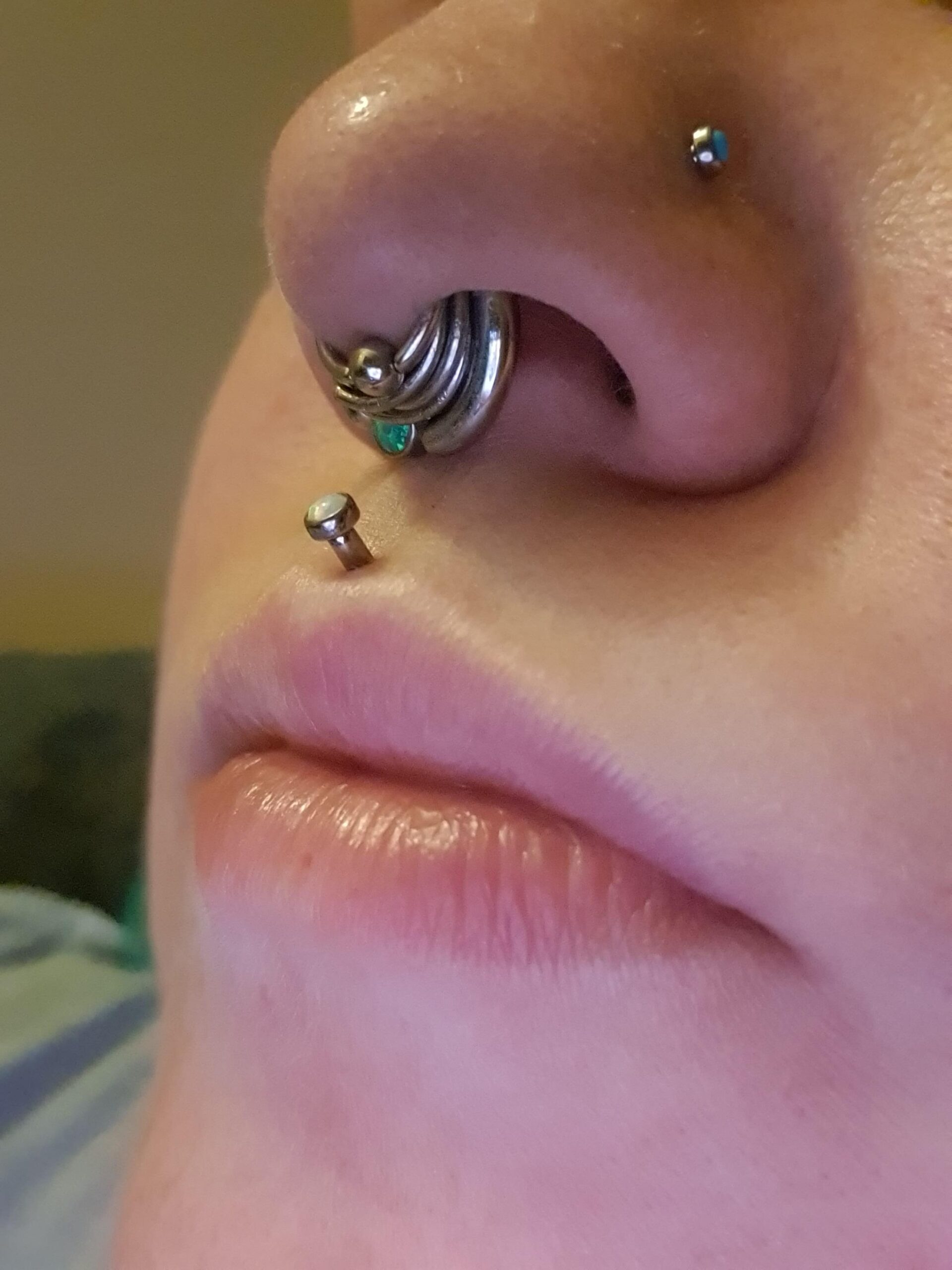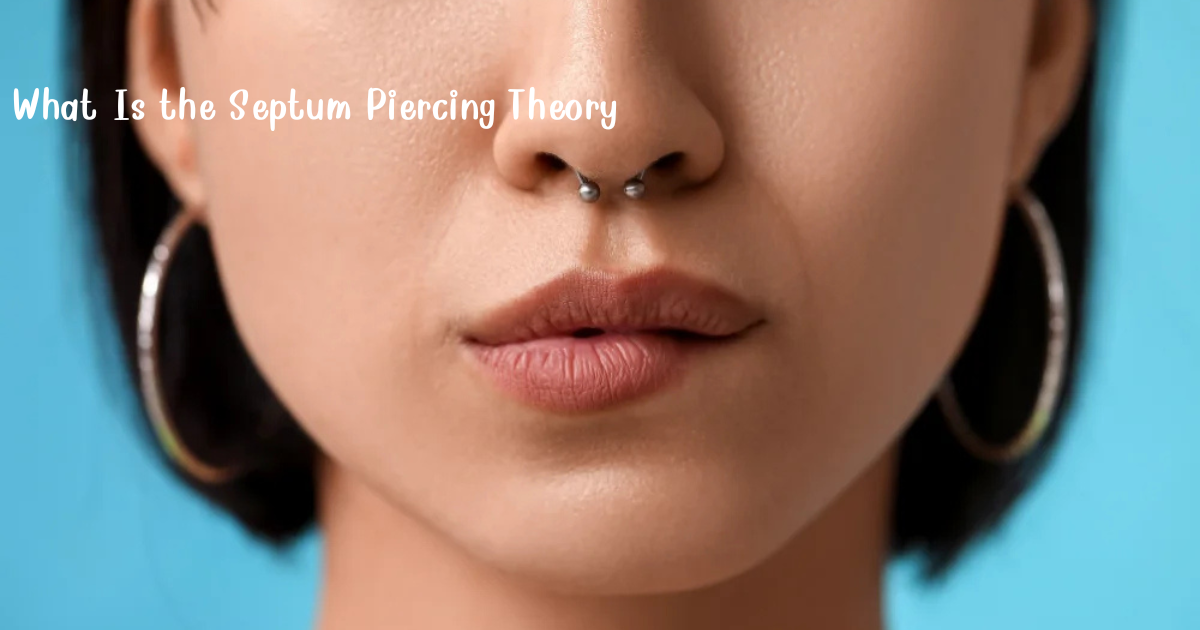The septum piercing theory explores the meaning, symbolism, and purpose behind one of the most iconic facial piercings in the world. While today’s culture often views septum piercings as a form of fashion and self-expression, the theory goes deeper connecting this practice to ancient rituals, psychology, and cultural identity.
A septum piercing involves placing jewelry through the thin piece of tissue between the nostrils, known as the nasal septum. Although it’s often chosen for aesthetic reasons, historically it has represented transformation, strength, courage, and balance. Understanding the theory behind this piercing reveals that it is much more than a style statement—it’s a form of communication that transcends generations and cultures. sterling silver meaning

The Origin and Cultural Roots of Septum Piercing
The Septum Piercing has existed for thousands of years and can be found across various civilizations and tribes. In ancient cultures, the septum piercing carried deep spiritual and social significance.
In India and Nepal, septum piercings were part of traditional adornment among women, representing beauty, maturity, and social identity. Among Native American tribes, particularly the Aztecs, Mayans, and Incas, warriors often wore septum piercings as a symbol of courage and strength. In certain African and Pacific Islander tribes, the piercing denoted social status or was performed during initiation rituals to mark the transition into adulthood.
For these cultures, the act of piercing the septum was never just decorative. It was symbolic—a physical manifestation of inner transformation. Warriors used it to show bravery, shamans wore it for spiritual connection, and young men and women adopted it as a rite of passage. The theory suggests that the septum piercing represented the balance between physical endurance and emotional growth.
The Modern Septum Piercing Theory: Expression and Identity
In the modern world, septum piercings have reemerged as powerful tools of self-expression. While fashion trends play a major role in their popularity, the deeper motivation for many wearers lies in individuality and personal symbolism.
Today’s septum piercing theory focuses on how body art reflects identity. The piercing sits at the center of the face—the most visible and expressive part of the body—symbolizing openness, authenticity, and self-confidence.
For some, it’s an act of rebellion against social norms; for others, it’s an affirmation of freedom and independence. The placement also makes it easy to conceal, allowing wearers to control when and how they show this aspect of themselves, adding layers of meaning to their choice.
From a psychological perspective, septum piercing can represent transformation. The brief pain of the piercing process and the subsequent healing symbolize endurance and personal growth. Many people choose to get their septum pierced during significant life changes—new beginnings, recoveries, or milestones—making it a symbolic gesture of inner strength.
The Energy and Symbolic Balance of the Septum Area
The septum, located between the nostrils, plays a symbolic role in various philosophical and spiritual systems. It sits at the center of the face, representing equilibrium between left and right, logic and emotion. Some spiritual interpretations associate it with balance and grounding—aligning the physical body with emotional and mental clarity.
In Ayurvedic and holistic practices, the nose is connected to breath and life force energy (prana). Piercing the septum, therefore, is thought to enhance awareness, focus, and intuition. While these interpretations may not be scientifically proven, they highlight how ancient symbolism continues to shape modern perspectives on body modification.

The Fashion Perspective: The Fusion of Meaning and Aesthetics
Although the septum piercing theory carries deep cultural and spiritual meaning, fashion has given it new life in contemporary society. Influencers, celebrities, and models have redefined the piercing as a statement of individuality and confidence. Yet, even within the fashion world, many wearers connect emotionally with their piercing—it becomes part of their story, rather than just an accessory.
This blending of ancient symbolism with modern aesthetics shows how body art evolves while retaining its original power. A septum piercing can be minimalist and delicate or bold and decorative, but its essence as a symbol of strength and transformation remains unchanged.
The Psychological Theory: Pain, Transformation, and Empowerment
From a psychological standpoint, getting a septum piercing can represent more than just an external change, it can be a deeply personal experience. The act of enduring momentary pain to achieve something meaningful mirrors the concept of transformation through struggle. This theory aligns with the idea that humans often use physical rituals, like piercings or tattoos, to mark emotional milestones.
Pain, in this sense, becomes symbolic—a test of willpower and self-expression. For many people, a septum piercing is an empowering act that allows them to reclaim control over their body and appearance. It serves as a reminder of resilience and authenticity.
Modern Interpretations and Global Appeal
In today’s interconnected world, septum piercings transcend cultural and gender boundaries. They have become a universal form of expression that combines tradition with modern style. The theory behind this phenomenon emphasizes the human desire to connect the physical body with emotional and cultural identity. It’s an art form that tells a story—one that can be shared across cultures while remaining deeply personal.
The septum piercing theory reveals that what many see as a trend is actually a practice rooted in history, psychology, and spirituality. From ancient tribes and warriors to modern artists and fashion icons, the septum piercing has carried meanings of strength, balance, and transformation for centuries.
Understanding this theory helps us appreciate the depth behind such a small yet powerful form of expression. Whether worn for spiritual reasons, fashion, or personal symbolism, a septum piercing represents much more than beauty—it embodies courage, individuality, and the timeless connection between the inner self and outward expression.
